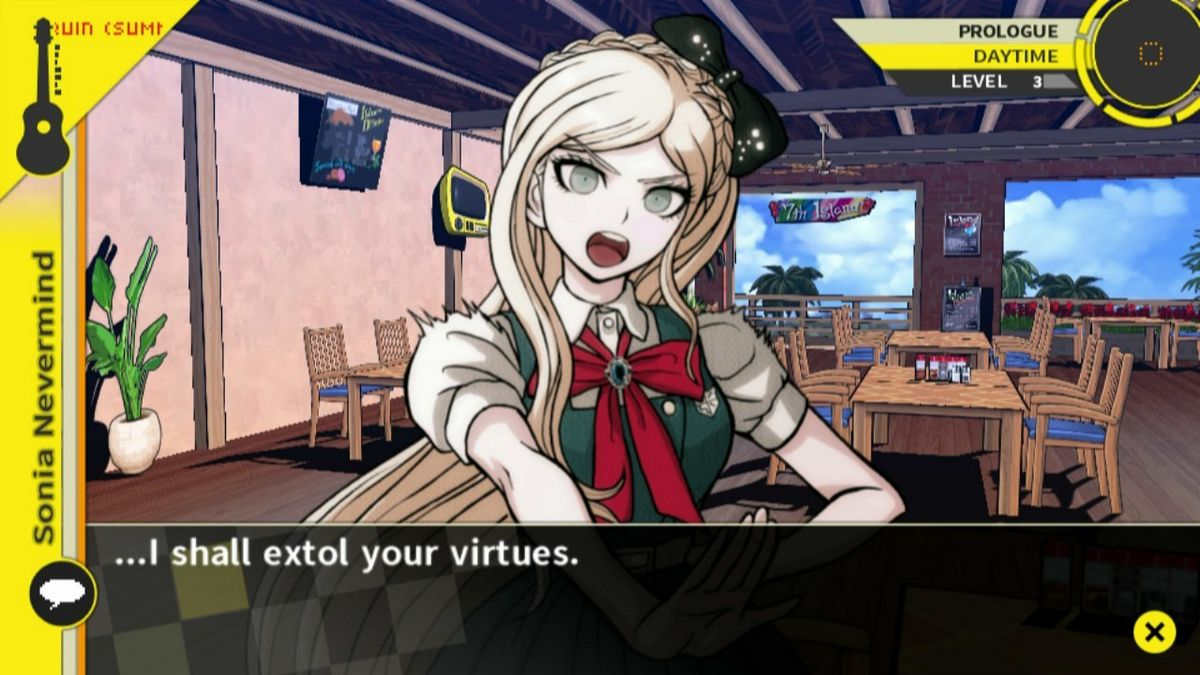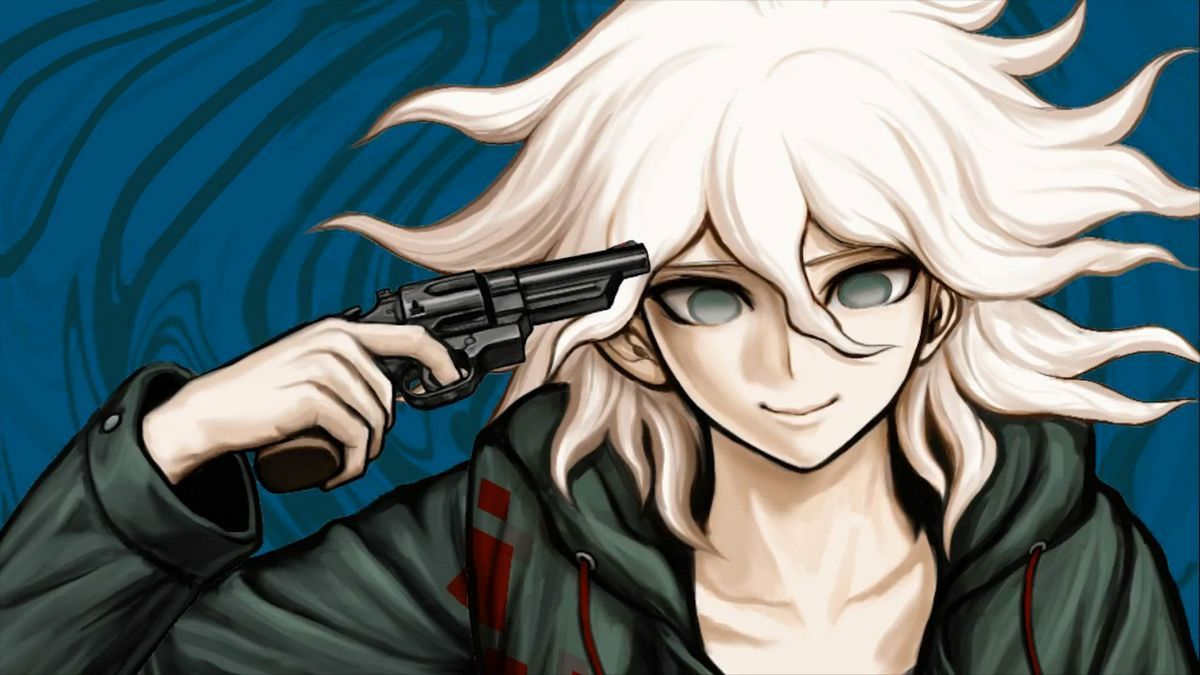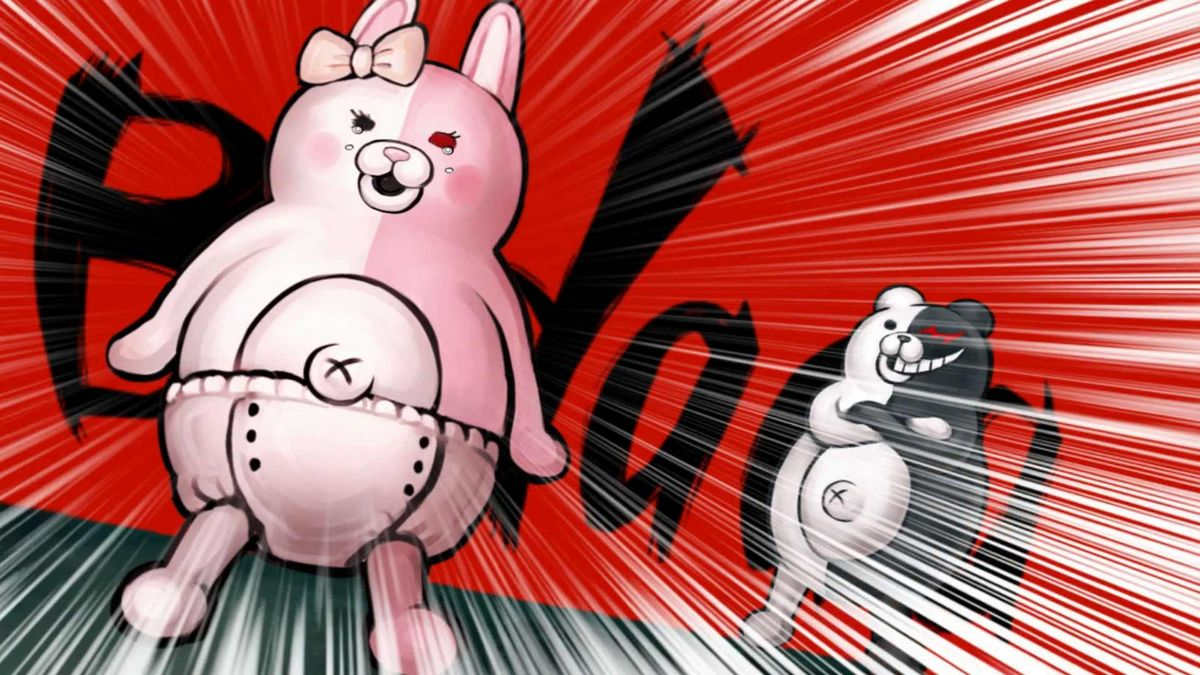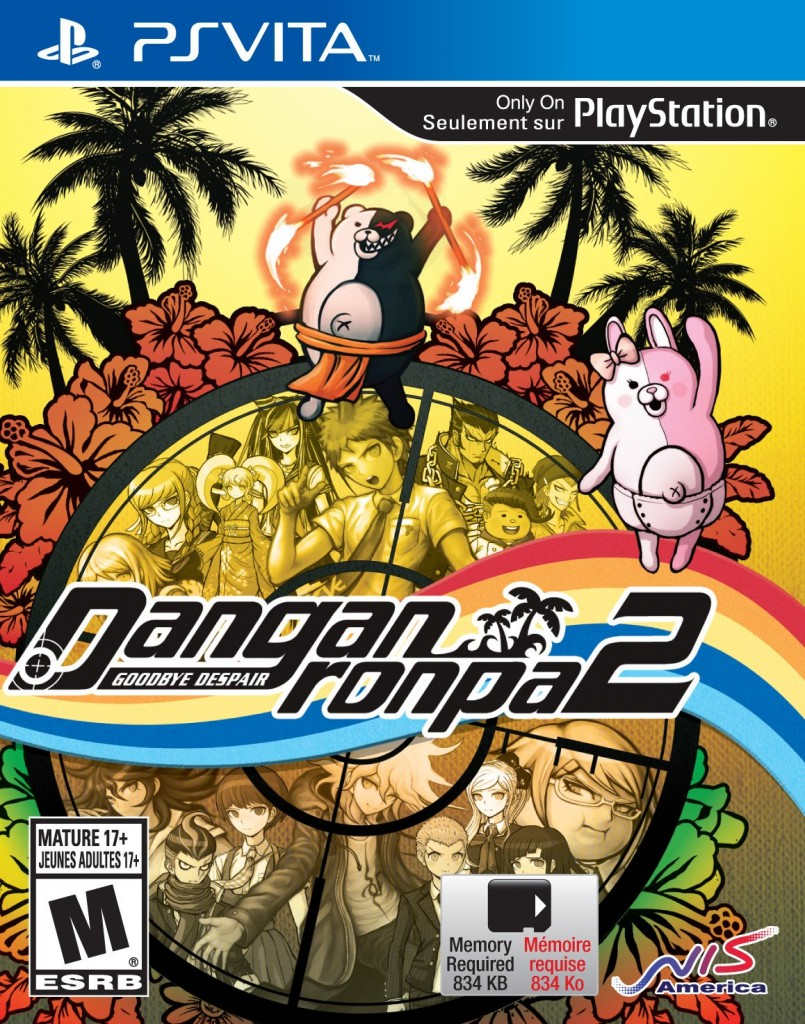Danganronpa 2: Goodbye Despair is a critically acclaimed visual novel game developed and published by Spike Chunsoft. It is the second installment in the Danganronpa franchise, following the success of its predecessor, Trigger Happy Havoc. The game features an intriguing storyline where sixteen students find themselves trapped on a tropical island and forced to participate in a twisted game of life-and-death. With captivating characters, immersive gameplay mechanics, and thought-provoking themes surrounding morality and truth, Danganronpa 2: Goodbye Despair has earned its place as one of the most innovative games in recent years. This article delves deep into this enthralling masterpiece of gaming that challenges players’ minds with its intricate murder mysteries while offering them an unforgettable experience full of suspense, drama, emotion, and adventure.
- The narrative structure of Danganronpa 2: Goodbye Despair
- An analysis of the game’s character development and their impact on gameplay
- The use of symbolism in Danganronpa 2: Goodbye Despair
- A critical evaluation of the game’s themes, including morality and hope
- An examination of how Danganronpa 2 transforms traditional visual novel tropes into an interactive experience
- How does the trial system work in Danganronpa 2? A closer look at mechanics and strategies for success
- An exploration of how sound design contributes to player immersion in Danganronpa 2: Goodbye Despair
- Analysis of post-game content, such as Island Mode and Tamagotchi simulator Monomi’s Practice Lesson mode
The narrative structure of Danganronpa 2: Goodbye Despair
The game is divided into chapters, each with its own individual storyline that contributes to the overarching plot of the game. The protagonist, Hajime Hinata, finds himself trapped on a tropical island alongside his classmates and forced to participate in a twisted murder game orchestrated by an evil mastermind.
Throughout each chapter, players are tasked with gathering clues and evidence to solve various murders committed by their fellow classmates. The narrative structure expertly weaves together elements of suspense, intrigue, and psychological manipulation as players attempt to uncover the identity of the killer while navigating through complex character relationships.
One notable aspect of Danganronpa 2’s narrative structure is its use of trial sequences. These segments require players to present evidence gathered during investigations to refute false claims made by other characters while also adding new pieces to the puzzle. It creates a sense of tension and high stakes as incorrect answers can lead to dire consequences for both Hajime and his peers.
Overall, Danganronpa 2: Goodbye Despair’s narrative structure stands out due to its masterful execution in delivering a compelling murder mystery story that keeps players engaged from start-to-finish through well-written dialogue between colourful characters along with clever twists throughout the plotline.

An analysis of the game’s character development and their impact on gameplay
The game’s unique premise centers on a group of high school students who are trapped in an island by their evil stuffed bear, Monokuma, and forced to participate in a sadistic killing game. As such, character development plays a crucial role in influencing the player’s decisions and impacting gameplay.

Each character has distinct personalities and backgrounds that gradually unfold throughout the story. This provides players with ample opportunities to empathize with these characters or even despise them. The relationships between characters also play an important part in shaping how events unfold within the game.
Moreover, as players progress through Danganronpa 2: Goodbye Despair, they will come across many difficult choices that will test their moral compasses. These choices often involve sacrificing one character for another or deciding whether to trust someone or not, which creates tension-filled moments where players must decide who deserves their loyalty and what actions they should take.
In conclusion, Danganronpa 2: Goodbye Despair utilizes its complex character development to create emotional connections with its audience while simultaneously challenging them morally through impactful gameplay decisions. By doing so, it sets itself apart from other games in this genre while providing an unforgettable experience for those willing to dive deep into its world and characters.
The use of symbolism in Danganronpa 2: Goodbye Despair
One of the most prominent examples of this can be seen in the game’s cast of characters, each representing a specific aspect or theme relevant to the overarching narrative. For instance, one character represents hope while another represents despair, and their interactions throughout the story add layers of meaning to their respective themes.
Additionally, Danganronpa 2 uses various objects and motifs as symbols throughout gameplay. The Monokuma plushies that are scattered around serve as reminders of the antagonist’s presence and influence over the island setting. The virtual reality headset worn by one character serves not only as a plot device but also symbolizes escapism from reality.

Furthermore, even colors play an important symbolic role in Danganronpa 2. From clothing choices to background designs, certain hues are associated with certain emotions or concepts such as red for danger or green for envy.
Overall, symbolism is integral to understanding Danganronpa 2’s intricate storytelling and adds depth and nuance to both its characters and themes. Its effective use helps elevate it beyond being just another visual novel game into a thought-provoking experience worth delving into more deeply.
A critical evaluation of the game’s themes, including morality and hope
The themes of morality and hope are central to the narrative, as players navigate through a cast of characters who find themselves trapped on a remote island where they must participate in deadly games orchestrated by an enigmatic bear named Monokuma.
The game’s exploration of morality is multi-faceted, presenting players with ethical dilemmas that challenge their sense of right and wrong. The characters are forced to make difficult decisions, such as choosing between self-preservation or sacrificing others for the greater good. Throughout the game, morality is presented not as black-and-white but rather shades of gray, leaving players questioning whether their choices were truly justified.
In contrast to the darker elements present within Danganronpa 2: Goodbye Despair’s plotline lies its theme of hope. Despite being thrust into seemingly impossible circumstances, each character holds onto hope in some form or another. Whether it be believing in oneself or trusting in others’ abilities to overcome adversity together, this theme provides a glimmer of light amidst all the despair.
Overall, Danganronpa 2: Goodbye Despair presents complex themes that require critical evaluation from both avid gamers and those interested in exploring philosophical ideas concerning morality and hope within storytelling mediums like fiction writing. Its exploration into these concepts adds depth to not only its story but also encourages self-reflection among those who interact with it.
An examination of how Danganronpa 2 transforms traditional visual novel tropes into an interactive experience
The game presents a series of murder mysteries in which players must investigate crime scenes, collect evidence, and engage in class trials to uncover the truth behind each murder.
This interactive approach to storytelling transforms the traditional visual novel format into an immersive experience that challenges players’ deductive reasoning skills. By introducing mini-games such as Hangman’s Gambit and Logic Dive, Danganronpa 2 encourages players to actively participate in solving each mystery rather than simply reading through text-based narrative sequences.
Furthermore, the game‘s use of character relationships and social dynamics further enhances its interactivity. Through character interactions and bonding events, players can develop bonds with their classmates that can affect how they behave during class trials. This adds an additional layer of complexity to each investigation as players must consider not only physical evidence but also psychological factors when piecing together clues.
Overall, Danganronpa 2: Goodbye Despair represents a significant departure from traditional visual novels by incorporating interactive gameplay mechanics into its narrative structure. This innovative approach breathes new life into the genre while challenging player expectations and rewarding strategic thinking abilities.
How does the trial system work in Danganronpa 2? A closer look at mechanics and strategies for success
The trial begins with an investigation phase, where the player must gather clues and evidence related to the murder case at hand. During this phase, players can interact with various non-playable characters (NPCs) to gather additional information, explore different locations, and discover hidden secrets.
Once enough evidence has been gathered, the trial shifts into its second phase: Nonstop Debates. In this section of the game, players are presented with statements from NPCs that they must refute or agree with using evidence obtained during their investigation. As players progress through each debate successfully, new statements will be added until all relevant information has been revealed.
One key strategy for success in Danganronpa 2 trials is honing one’s analytical skills when it comes to examining evidence thoroughly. Another important factor is understanding how best to use your character’s unique abilities during gameplay – some may find certain pieces of evidence more easily than others depending on what skillset they possess as part of their talents within Hope’s Peak Academy.
In conclusion, Danganronpa 2 offers a thrilling blend of mystery-solving mechanics that requires careful attention to detail when investigating and debating throughout each trial segment. By utilizing these strategies effectively while exploring every aspect of available content within each instance-players can emerge victorious over any challenge thrown their way!
An exploration of how sound design contributes to player immersion in Danganronpa 2: Goodbye Despair
From the sound effects used during gameplay to the soundtrack that accompanies each scene, every aspect of audio is carefully crafted to enhance the player’s emotional connection with the game.
One notable example of how sound design contributes to immersion is during Class Trials – intense debates where players must use evidence and logic to uncover the truth behind murders. The background music shifts dynamically depending on the intensity of the debate, making it easier for players to feel invested in these high-stakes moments. Meanwhile, sound effects such as paper shuffling and character movements help create a sense of presence within this virtual world.
The game also employs unique auditory cues when introducing new characters or plot twists – whether it be through distinct musical themes or vocal mannerisms. These subtle details serve as a way for players to easily recognize and differentiate between various elements within the game world.
Overall, Danganronpa 2’s masterful use of sound design immerses players fully into its twisted narrative and keeps them engaged throughout their journey towards discovering each character’s hidden secrets.
Analysis of post-game content, such as Island Mode and Tamagotchi simulator Monomi’s Practice Lesson mode
Among these, two stand out in particular, Island Mode and Tamagotchi simulator Monomi’s Practice Lesson mode.
Island Mode is a feature that allows players to explore the tropical island where the main game takes place. It involves various activities such as collecting resources, fishing, and building relationships with other characters through conversations and gifts. The aim here is to survive on the island for as long as possible while maintaining good relationships with everyone.
On the other hand, Monomi’s Practice Lesson mode challenges players to take care of a virtual pet called Usami during its training sessions. This mode requires careful attention and strategic decision-making skills from players who must manage their time between training exercises and feeding Usami while also keeping it clean.
Both modes offer unique gameplay experiences that extend well beyond what one would typically expect from a single-player title like Danganronpa 2: Goodbye Despair. They showcase just how much effort has gone into creating this game world – offering fans more reasons to stick around even after completing the main story campaign!

In conclusion, Danganronpa 2: Goodbye Despair is a thrilling and captivating game that takes players on a journey of mystery and intrigue. With its unique blend of visual novel storytelling and survival gameplay mechanics, the game offers an immersive experience that keeps players engaged from start to finish.
The storyline is complex and layered with twists and turns that keep the player guessing until the very end. The characters are well-developed and each has their own distinct personality, making them easy to root for or against throughout the game.
The graphics are colorful, vibrant, and add to the overall atmosphere of the game. The soundtrack also does an excellent job of capturing the emotions of each scene while adding tension when needed.
Overall, Danganronpa 2: Goodbye Despair is a must-play for fans of visual novels or anyone looking for a challenging but rewarding gaming experience. It’s no wonder why it has garnered such a loyal following over the years since its release in 2014.
Read More:- Experience Thrilling Mysteries with Danganronpa 1-2 Reload – A Must-Play Game for Fans and Newcomers!.
- Discover the Intense Trials and Tribulations of Phoenix Wright in this Exciting Game!.
- Unveiling the Mystery: Solve The Murder of Sonic the Hedgehog Game for Thrilling Adventure!.
- Uncover the Truth in Phoenix Wright: Ace Attorney – The Ultimate Courtroom Thriller (69 characters).
- Rev Up Your Ride with Trials Evolution: Origin of Pain Game – A Thrilling Adventure! (69 characters).
- Unravel the Mystery: The Curse of Monkey Island Game Review and Analysis.
- Unravel the Mystery in Professor Layton VS Phoenix Wright Ace Attorney – The Ultimate Game Crossover!.